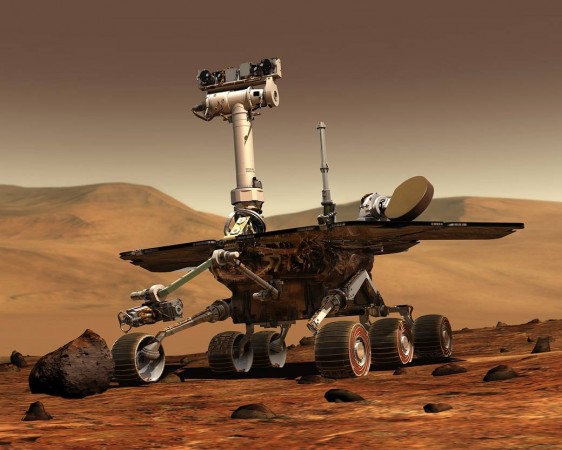
A global dust storm has been blowing with full fury on the Martian surface ever since May 2018 and it is now badly threatening NASA's Opportunity Rover, the longest-lived exploration robot on the planet. The rover which reached the Martian surface was expected to last just three months, but surprisingly, the robot continued its exploration for nearly fifteen years.
In this tenure of loyal service, Opportunity Rover made use of sunlight to power its batteries and it sent several vital information regarding the red planet. However, due to the recent dust storm, Opportunity Rover hibernated on June 10, 2018, and it has not sent any information to the earth until now.
Due to the raging storm, Opportunity Rover is now not able to receive sunlight to power its batteries. It should be also noted that the rover is now coated with fine dust, and as a result, the rover's ability to store and use electrical energy has been drastically lowered.
"This is the worst storm Opportunity has ever seen, and we're doing what we can, crossing our fingers, and hoping for the best," said Steve Squyres, a planetary scientist at Cornell University and a lead scientist of the Opportunity Rover mission, Planetary.org reports.
However, a press release issued by NASA on August 16, 2018, revealed that they are optimistic about the future of Opportunity Rover. In the statement, NASA said that the dust storm in Mars has been diminishing over the past couple of weeks, and as a result, sunlight could hit the solar panels of the rover soon.
The United States space agency also added that the Rover may behave in a very different manner if it comes back to life.
"It's like a patient coming out of a coma: It takes time to fully recover. It may take several communication sessions before engineers have enough information to take action. Even if engineers hear back from Opportunity, there's a real possibility the rover won't be the same," said NASA in the statement.









